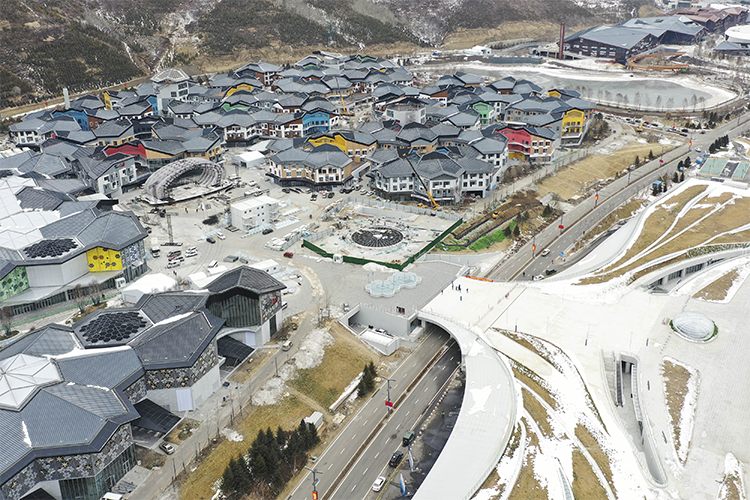Chongli Winter Olympics Travel Guide: Snow, History & Adventure
Chongli Winter Olympic Core: Snow, History, Adventure
Introduction: When Olympic Ice Meets Jin Dynasty Royalty
Nestled in the snow‑draped Yanshan range, a modern winter-sports kingdom and an 800-year-old Jin dynasty royal retreat converse across time. This is Chongli’s Winter Olympic core — China’s only destination that combines Olympic venues with Liao-Jin archaeological heritage. Beyond the striking silhouette of the “Xue Ruyi” ski jump, Chongli hosts Asia’s largest cluster of ski resorts. In winter, athletes carve bright traces down professional runs while glazed eaves from the Taizicheng ruins glitter in the sun; in summer, alpine meadows become an outdoor playground and the old city walls still echo the royal hunting tales recorded in Marco Polo’s travels.
1. Soul Positioning: A Superblend of Olympic Legacy and Layered History
The ultimate draw here is a “time-travel on a world-class ski field” experience. The core area centers on Taizicheng (Prince City) Ice & Snow Town, with seven premier ski areas scattered like pearls. The national ski jump “Xue Ruyi” (Snow Ruyi) — its S-shaped inrun modeled after the ruyi scepter — is an internet-famous landmark. Less than a kilometer away the earthen walls of the Jin emperor Zangzong’s summer palace, Taihe Palace, quietly reveal centuries of history. That intimate proximity between Olympic infrastructure and archaeological ruins is unique among global ski destinations.
2. A Millennium Page: From Jin Dynasty Palace to Olympic Arena
In 1202 CE the sixth Jin emperor, Zhangzong, built the sprawling Taihe Palace here as a cool hunting retreat. Marco Polo noted the ruler’s famed white deer herds and golden palace roofs that gleamed like a god’s home. Archaeological finds in 2017 — gilded dragon ornaments and porcelain marked “Shangshi Ju” (Imperial Food Bureau) — confirmed the site’s former splendor. Today visitors stroll the Taizicheng ruins park and, through AR reconstructions, watch virtual cavalry processions march against the backdrop of modern Olympic venues.
3. Architectural Marvels: Contemporary Interpretations of Snow Aesthetics
Xue Ruyi’s ski jump epitomizes a fusion of traditional symbolism and modern engineering — the S-shaped descent echoes the ruyi motif, and an 80‑meter circular viewing deck at the top resembles an “ice jade ring.” At night the jump becomes a glowing star-streaked slide. The Ice & Snow Town’s master plan is snowflake-shaped; hotels use faceted glass facades that mimic ice crystals and even form real frost patterns in winter. The national cross-country center’s wooden canopies reinterpret the distinctive “eagle-wing” eaves of Liao‑Jin architecture.

4. Snow Fest: Asia’s Top Skiing Experiences
Ski Area Matrix:
– Wanlong Ski Resort: Renowned for 32 challenging runs and dry powder — a pro training base.
– Yunding (Cloud Peak) Park: Features a halfpipe and terrain park for freestyle, plus nightly light shows.
– Taiwu Town: North American–style resort with Chongli’s longest easy run at 3.5 km.
Unique Experiences:
– Try an athlete’s perspective on the Olympic-style Xue Ruyi track (coach and reservation required).
– Take a hot-air balloon over the ruins park for panoramic views of Jin walls and Olympic venues.
– Family-friendly snow parks offer reindeer sleds and ice bumper cars for kids.
5. Four-Season Play: Surprises Beyond Snow
May–September’s highland season offers:
– Ancient post-road hikes following former royal hunting routes and hidden cliff inscriptions.
– Mountain biking on Olympic-level cross-country tracks (public sections open to riders).
– Stargazing camps on the Taizicheng meadows with telescopes.
– Folk workshops: learn bow-and-arrow making and traditional fur-and-leather crafts replicated from Liao-Jin techniques.
6. Taste of the Ice and Snow Region
Must-try local dishes:
– Youmian wowo: oat dumplings from the Zhangbei plateau, perfect with wild mushroom soup.
– Charcoal-roasted leg of lamb: pasture-fed grassland lamb roasted in open displays in the Ice & Snow Town.
– Warm pot feasts: copper pot hotpot using locally sliced lamb and a Jin-era herbal stock.
Popular food spots:
– “Xue Ruyi Café”: sip champion-inspired latte art atop the national ski jump.
– “Taihe Palace Ice Banquet”: a themed restaurant inside the ruins park serving reinterpretations of Jin dynasty chilled dishes.

7. Practical Guide: Navigating the Dual Heritage
Best seasons:
– Ski season: December to March (January offers peak snow quality).
– Summer escape: July–August average 18°C; evenings can be cool — bring a jacket.
Transport:
– High-speed rail: Beijing North to Taizicheng in about 50 minutes; six daily “Winter Olympics Express” services.
– Driving: Jingli Expressway leads directly; the Ice & Snow Town offers three hours of free underground parking.
Smart services:
– All Olympic venues provide multilingual guided apps (Chinese, English, Japanese, Korean).
– Visa and MasterCard accepted at most merchants; foreign-currency exchange available in the town.
– Area-wide free Wi‑Fi with bandwidth suitable for 4K livestreaming.
Local tips:
– Catch the first cable car at 7:00 am to enjoy untouched powder and a sunrise over the ruins.
– On Wednesday afternoons Taiwu Town hosts traditional “da shuhua” (molten-iron fireworks) performances by intangible heritage artists.
Conclusion: After the Olympics, the Legend Continues
When the last sunray slides across Xue Ruyi’s curve and gilds the Taizicheng ruins, you’ll see why travel guides call this one of the most promising mixed-heritage destinations for the next decade. Whether you chase adrenaline on steep runs or decode ancient civilization traces, Chongli’s Winter Olympic core folds eight centuries into a single, unforgettable journey. Pack your bags — this cross-century conversation awaits you.


